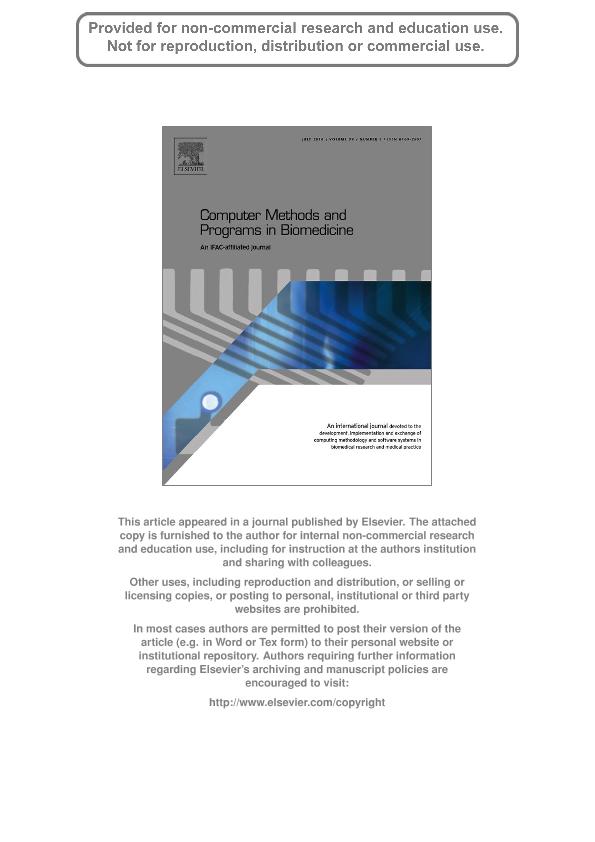Artículo
Assessing erectile neurogenic dysfunction from heart rate variability through a Generalized Linear Mixed Model framework
Fernandez, Elmer Andres ; Souza Neto, E. P.; Abry, P.; Macchiavelli, R.; Balzarini, Monica Graciela
; Souza Neto, E. P.; Abry, P.; Macchiavelli, R.; Balzarini, Monica Graciela ; Cuzin, B.; Baude, C.; Frutoso, J.; Gharib, C.
; Cuzin, B.; Baude, C.; Frutoso, J.; Gharib, C.
 ; Souza Neto, E. P.; Abry, P.; Macchiavelli, R.; Balzarini, Monica Graciela
; Souza Neto, E. P.; Abry, P.; Macchiavelli, R.; Balzarini, Monica Graciela ; Cuzin, B.; Baude, C.; Frutoso, J.; Gharib, C.
; Cuzin, B.; Baude, C.; Frutoso, J.; Gharib, C.
Fecha de publicación:
07/2010
Editorial:
Elsevier Ireland
Revista:
Computer Methods And Programs In Biomedicine
ISSN:
0169-2607
Idioma:
Inglés
Tipo de recurso:
Artículo publicado
Clasificación temática:
Resumen
Background: The low (LF) vs. high (HF) frequency energy ratio, computed from the spectral decomposition of heart beat intervals, has become a major tool in cardiac autonomic system control and sympatho-vagal balance studies. The (statistical) distributions of response variables designed from ratios of two quantities, such as the LF/HF ratio, are likely to non-normal, hence preventing e.g., from a relevant use of the . t-test. Even using a non-parametric formulation, the solution may be not appropriate as the test statistics do not account for correlation and heteroskedasticity, such as those that can be observed when several measures are taken from the same patient. Objectives: The analyses for such type of data require the application of statistical models which do not assume a priori independence. In this spirit, the present contribution proposes the use of the Generalized Linear Mixed Models (GLMMs) framework to assess differences between groups of measures performed over classes of patients. Methods: Statistical linear mixed models allow the inclusion of at least one random effect, besides the error term, which induces correlation between observations from the same subject. Moreover, by using GLMM, practitioners could assume any probability distribution, within the exponential family, for the data, and naturally model heteroskedasticity. Here, the sympatho-vagal balance expressed as LF/HF ratio of patients suffering neurogenic erectile dysfunction under three different body positions was analyzed in a case-control protocol by means of a GLMM under gamma and Gaussian distributed responses assumptions. Results: The gamma GLMM model was compared with the normal linear mixed model (LMM) approach conducted using raw and log transformed data. Both raw GLMM gamma and log transformed LMM allow better inference for factor effects, including correlations between observations from the same patient under different body position compared to the raw LMM. The gamma GLMM provides a more natural distribution assumption of a response expressed as a ratio. Conclusions: A gamma distribution assumption intrinsically models quadratic relationships between the expected value and the variance of the data avoiding prior data transformation. SAS and R source code are available on request.
Archivos asociados
Licencia
Identificadores
Colecciones
Articulos(CCT - CORDOBA)
Articulos de CTRO.CIENTIFICO TECNOL.CONICET - CORDOBA
Articulos de CTRO.CIENTIFICO TECNOL.CONICET - CORDOBA
Citación
Fernandez, Elmer Andres; Souza Neto, E. P.; Abry, P.; Macchiavelli, R.; Balzarini, Monica Graciela; et al.; Assessing erectile neurogenic dysfunction from heart rate variability through a Generalized Linear Mixed Model framework; Elsevier Ireland; Computer Methods And Programs In Biomedicine; 99; 1; 7-2010; 49-56
Compartir
Altmétricas



